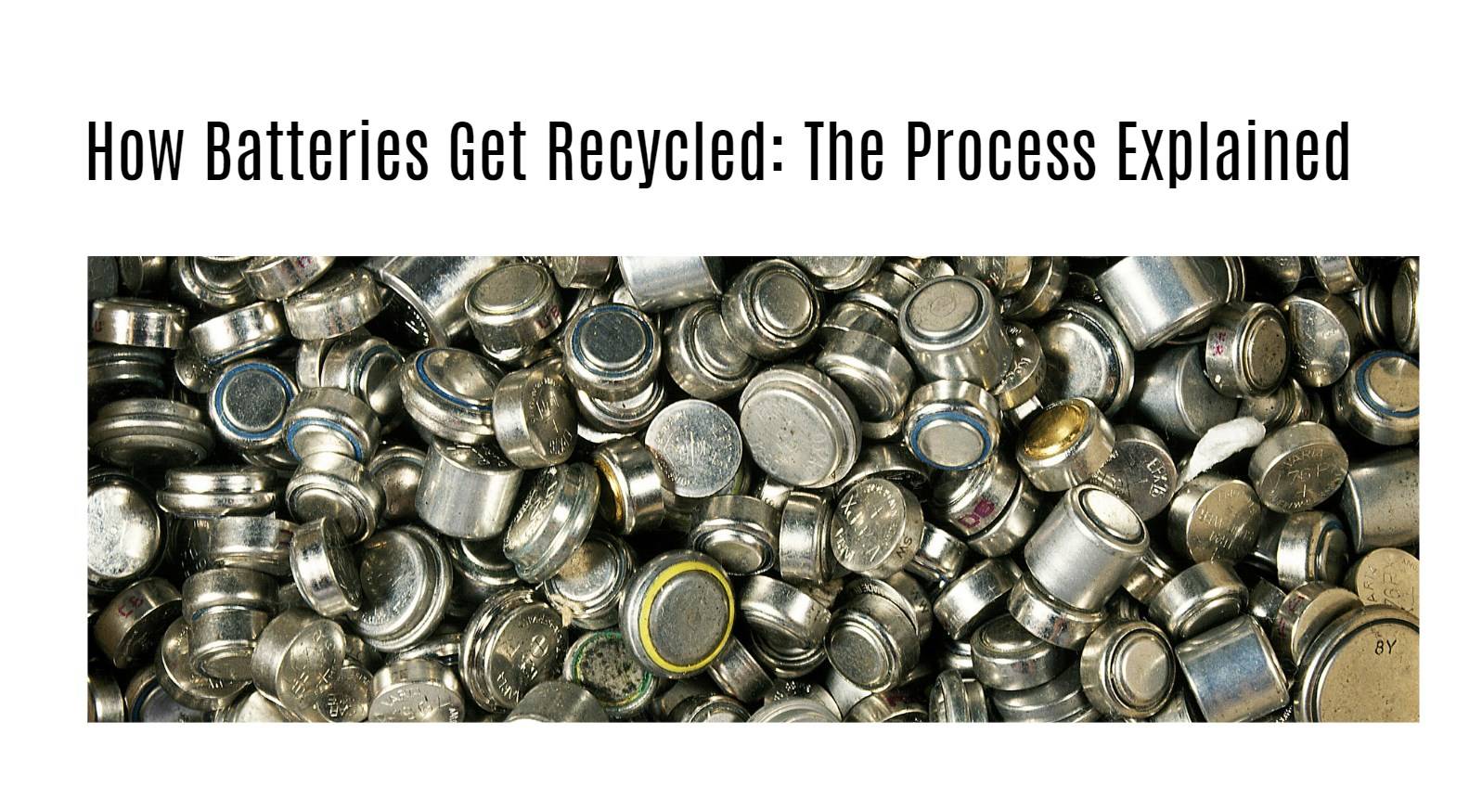As the demand for batteries continues to rise, so does the importance of recycling them responsibly. Battery recycling is crucial for recovering valuable materials and reducing environmental impact. This article will explain how batteries are recycled, the processes involved, and the significance of proper recycling.
What Are the Initial Steps in the Battery Recycling Process?
The battery recycling process begins with collecting and sorting used batteries. A well-organized system is paramount, as different battery types (alkaline, lithium-ion, etc.) require specific handling procedures to prevent cross-contamination.
- Collection: Used batteries can be collected through various methods such as drop-off locations, curbside pickups, or dedicated recycling centers.
- Sorting: Once collected, batteries are sorted by type and chemistry. This step is essential because each type of battery requires a different recycling method.
How Are Batteries Prepared for Recycling?
Before the recycling process can begin, batteries must be prepared according to their type. This preparation typically occurs in specialized battery processing facilities equipped with machinery designed for dismantling and recycling.
- Dismantling: The external components of the battery, such as casings and labels, are removed. This exposes the core components of the battery materials.
- Further Sorting: After dismantling, batteries are sorted again based on their type to ensure efficient recycling of diverse materials present in different kinds of batteries.
What Recycling Techniques Are Used for Different Battery Types?
Once batteries have been sorted and prepared, various recycling techniques are employed based on the specific type of battery.
Alkaline Batteries
Alkaline batteries are commonly found in household devices. The recycling process involves:
- Mechanical Separation: Valuable metals like steel, zinc, and manganese are extracted from the battery’s core.
- Chemical Leaching: A weak acid solution is used to dissolve remaining materials in the battery, allowing for the recovery of zinc and manganese in a reusable form.
Lithium-Ion Batteries
Lithium-ion batteries are prevalent in modern electronics and electric vehicles. Their recycling process includes:
- Mechanical Shredding: The batteries are shredded into smaller pieces.
- Hydrometallurgical Process: This method separates valuable metals such as lithium, cobalt, and nickel from other materials.
- Pyrometallurgy: Some metals may also be recovered through smelting processes.
Nickel-Cadmium and Nickel-Metal Hydride Batteries
These batteries undergo a slightly different process:
- Separation of Plastics: Before smelting, plastics are separated from metal components.
- High-Temperature Metal Reclamation (HTMR): Metals are melted in a furnace where high-temperature metals amalgamate while low-melt metals separate out.
How Are Valuable Materials Recovered from Recycled Batteries?
After processing, valuable materials are recovered through various techniques:
- Refining: Purification processes are employed to enhance the quality of recovered materials so they can be reused in new products.
- Solvent Extraction: Specific metals like lithium, cobalt, and nickel are separated and recovered from battery components.
Why Is Battery Recycling Important?
Battery recycling plays a vital role in sustainability for several reasons:
- Resource Recovery: Recycling helps recover valuable materials that can be reused in new batteries or other products, reducing the need for virgin materials.
- Environmental Protection: Proper recycling minimizes environmental pollution caused by improper disposal of batteries, which can leak harmful substances into soil and water.
- Energy Savings: Recycling often requires less energy than mining new materials, contributing to lower overall energy consumption.
Buy Wholesale Battery Tips
When considering wholesale battery purchases for businesses or projects:
- Research Suppliers Thoroughly: Look for reputable suppliers with a track record of quality products.
- Understand Specifications: Ensure that the batteries meet your specific requirements regarding capacity, size, and chemistry.
- Negotiate Pricing: Bulk purchases often allow for negotiation on pricing; don’t hesitate to ask for discounts.
- Check Warranty Policies: A good warranty can save costs on replacements or repairs.
- Consider Shipping Costs: Factor in shipping when calculating total costs; sometimes local suppliers can offer better deals.
Industrial News
Recent developments in battery recycling have made headlines:
- Advancements in Lithium Battery Recycling Technology: Companies are increasingly adopting hydrometallurgical methods due to their high recovery rates and lower environmental impact compared to traditional smelting techniques.
- New Regulations on Battery Disposal: Governments worldwide are implementing stricter regulations on battery disposal to promote recycling initiatives and minimize environmental harm.
Redway Expert Views
Experts emphasize the importance of continued investment in research and development within the battery recycling sector:”The future of sustainable energy relies heavily on our ability to recycle batteries effectively,” states Dr. Jane Smith from Redway Energy Solutions.”Improving our recycling processes will not only recover valuable resources but also significantly reduce our environmental footprint,” notes Mark Johnson, a leading industry analyst.
FAQs
- What types of batteries can be recycled?
Most types of batteries can be recycled, including alkaline, lithium-ion, nickel-cadmium, and lead-acid batteries. - How does battery recycling benefit the environment?
Recycling reduces pollution caused by improper disposal and lowers the need for new material extraction, which can harm ecosystems. - Can all materials from a battery be recycled?
While most materials can be recovered through various processes, some contaminants may limit complete recovery depending on the technology used. - Where can I recycle my used batteries?
Many communities have designated drop-off locations or retailers that accept used batteries for recycling. - Is there a cost associated with battery recycling?
In most cases, recycling programs do not charge fees; however, some specialized services may have associated costs depending on local regulations.



